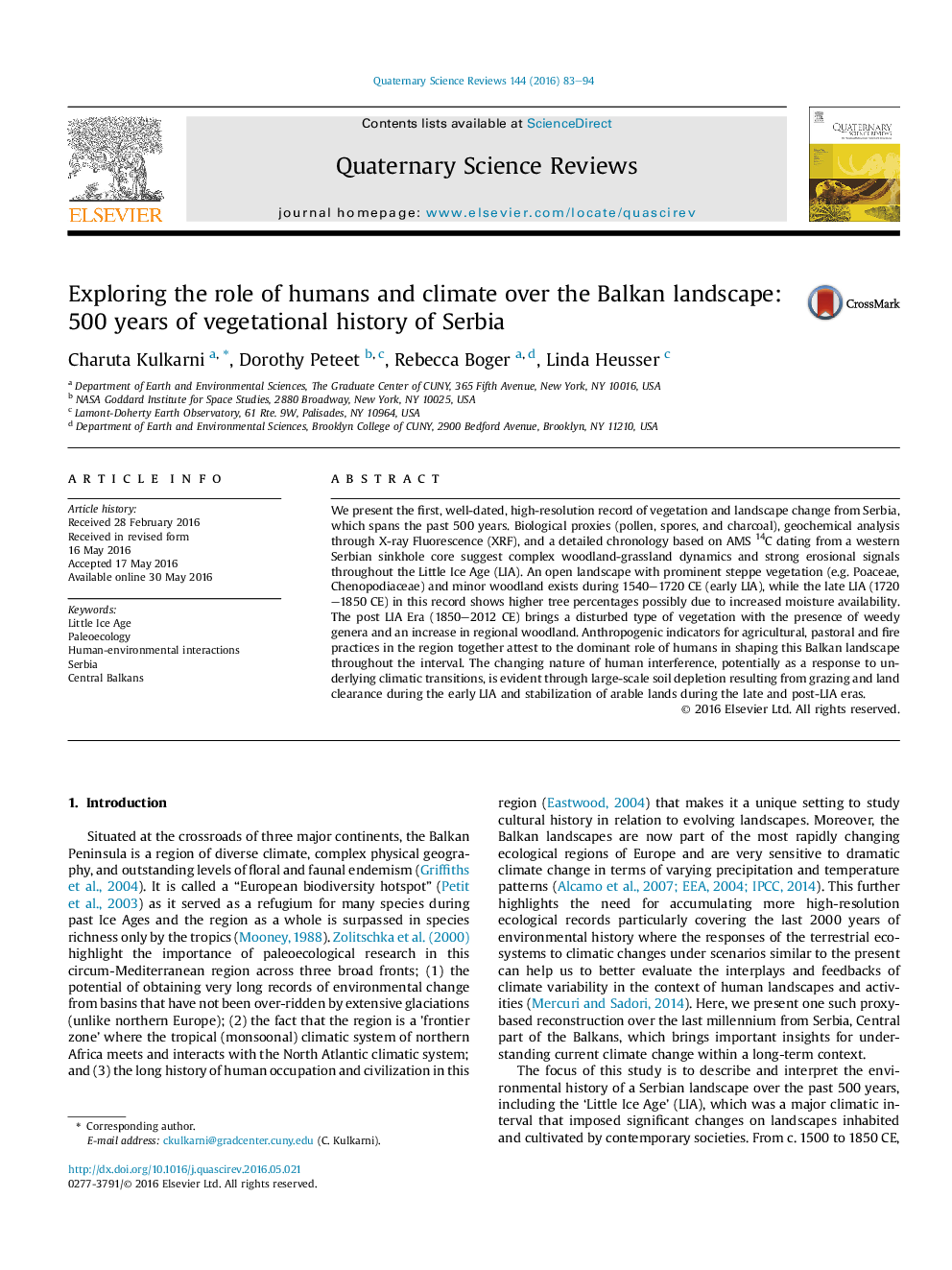| کد مقاله | کد نشریه | سال انتشار | مقاله انگلیسی | نسخه تمام متن |
|---|---|---|---|---|
| 4735983 | 1640791 | 2016 | 12 صفحه PDF | دانلود رایگان |
• The first Serbian palynological record of vegetation-landscape shifts from the Little Ice Age (LIA) to present.
• Open landscapes with minor woodland and intense land erosion ensued during 1540–1720 CE due to human and climatic impacts.
• Increased moisture availability in the late LIA (1720–1850 CE) is visible by increases in mesic and montane trees.
• Increased forest cover with stable cultivation characterized the post-LIA/Industrial Era.
We present the first, well-dated, high-resolution record of vegetation and landscape change from Serbia, which spans the past 500 years. Biological proxies (pollen, spores, and charcoal), geochemical analysis through X-ray Fluorescence (XRF), and a detailed chronology based on AMS 14C dating from a western Serbian sinkhole core suggest complex woodland-grassland dynamics and strong erosional signals throughout the Little Ice Age (LIA). An open landscape with prominent steppe vegetation (e.g. Poaceae, Chenopodiaceae) and minor woodland exists during 1540–1720 CE (early LIA), while the late LIA (1720–1850 CE) in this record shows higher tree percentages possibly due to increased moisture availability. The post LIA Era (1850–2012 CE) brings a disturbed type of vegetation with the presence of weedy genera and an increase in regional woodland. Anthropogenic indicators for agricultural, pastoral and fire practices in the region together attest to the dominant role of humans in shaping this Balkan landscape throughout the interval. The changing nature of human interference, potentially as a response to underlying climatic transitions, is evident through large-scale soil depletion resulting from grazing and land clearance during the early LIA and stabilization of arable lands during the late and post-LIA eras.
Journal: Quaternary Science Reviews - Volume 144, 15 July 2016, Pages 83–94
